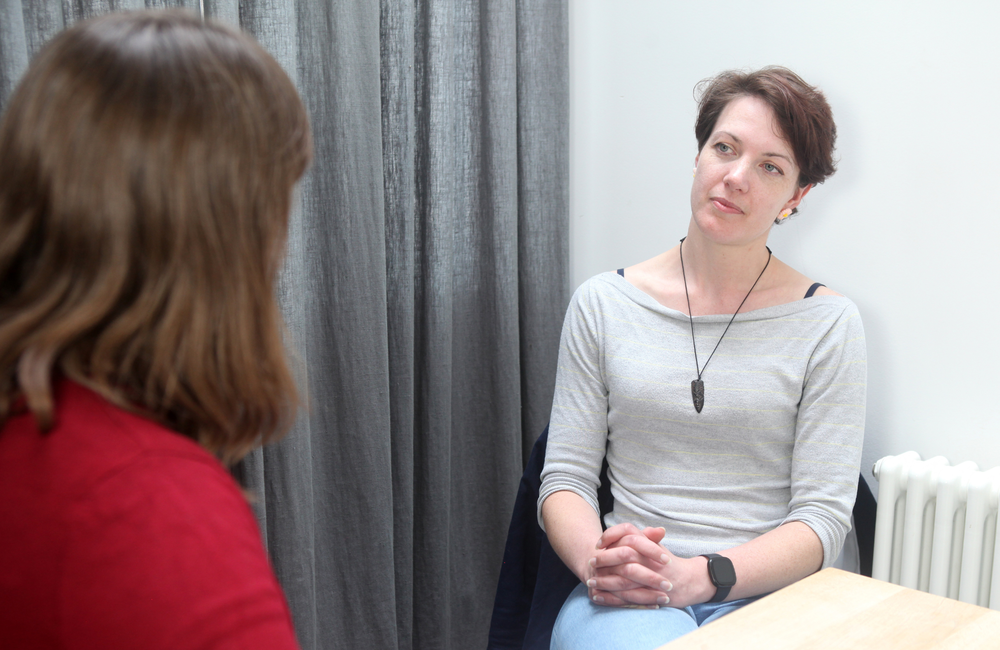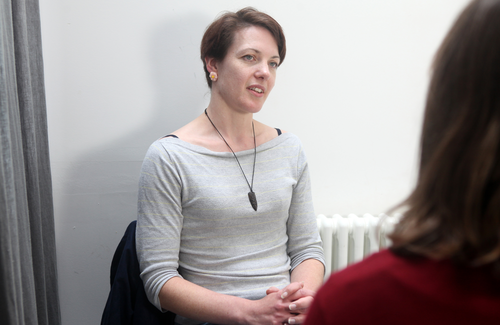
Key points
- Supervised pauses in HIV treatment are often used in cure trials to assess the effects of new drugs and vaccines.
- Extended periods of treatment interruption can lead to HIV transmission, development of serious illnesses, and drug resistance.
- People with HIV are more likely to participate in trials when health risks are poorly communicated by researchers.
- Cure research should prioritise the health of trial participants and their partners.
There are health risks for people living with HIV who volunteer to take part in HIV cure research. A particular concern is the risk that supervised pauses in HIV treatment (analytical treatment interruptions or ATIs) may pose to study participants.
Cases such as the ‘Boston patients’ show that even when ultrasensitive assays cannot find HIV in the cells of cure research subjects, it often reappears from where it has been hiding. These two men received transplants of stem cells in 2014 and the most sensitive assays found no trace of HIV in their bodies – in the case of one of the men, for 4.5 years. After this person was taken off antiretroviral therapy (ART), however, his HIV viral load rebounded within eight months.
Both of the Boston patients regained viral suppression and their CD4 counts recovered. But before re-suppression, their viral loads peaked in the millions, they developed symptoms similar to those seen in acute HIV infection, and one of the two developed an NNRTI drug resistance mutation.
A Spanish study published in 2021 found that treatment interruption in cure studies may have serious effects over a longer time period. It looked at 146 trial subjects who had had ATIs as part of cure studies between 1999 and 2018 and compared them with 45-HIV positive people who had never had an ATI.
The risk of developing a non-AIDS related serious illness subsequent to an ATI was four times higher in the people who had had ATIs than the ones who had not. It was particularly significant that the higher rates were not seen in all illnesses – in fact, cardiovascular events and bacterial infections were more common in the control group. But non-AIDS-defining cancers, liver and kidney disease were considerably more common in the ATI group. There was only one non-AIDS-defining cancer recorded in the control group versus 18 in the ATI group, for instance. This was a small study, but the only one that has looked at the impact of ATIs over such a long follow-up period.
Having said this, ATIs in the early 2000s tended to be longer – months to years – and ART usually only restarted when CD4 counts went below a threshold. With researchers now more conscious of the wider immune consequences of uncontrolled viraemia, ATIs are shorter now and ART is usually restarted as soon as viral rebound is confirmed – though what defines ‘viral rebound’ may vary according to trial design.
Viraemia (a detectable viral load) may take time to be confirmed, and during this time the trial participant may become capable of transmitting HIV. French researchers found that seminal viral loads in volunteers taking an ATI in a therapeutic vaccine study in 2014 rose to over 16,000 in four weeks and indeed there was one case of male-to-female transmission by a trial participant. A second case, of male-to-male transmission, happened in a Spanish trial of an experimental therapeutic vaccine in 2016. The study subject’s viral load rebounded four weeks after he was taken off ART and both he and his partner reported symptoms of acute HIV infection four weeks later. Their viruses were a genetic match.
Concerns had been expressed by community organisations about the risks of people stopping treatment since at least 2014, when the Treatment Action Group (TAG) released a statement urging, firstly, the use of study designs that minimise risks to participants, including the exclusion of those likely to be at highest risk of adverse outcomes; and, secondly, the provision of clear information that explains both absolute and relative risks of a treatment interruption as part of the informed consent procedure. A revised and expanded version of the TAG statement was issued in 2018 and a separate group of experts published their own recommendations for the safe conduct of ATIs in 2019.
At around the same time, an article in the Journal of Infectious Diseases concentrated more on the risk to sexual partners. It said that regular sexual partners should, with the participant’s consent, be informed of the trial and of its progress, and of the risks of ATIs. The writers said that informing and supporting partners, including recommending and offering PrEP if it is not already being used, should be framed as part of their primary obligation to the participants themselves, as transmitting HIV can be seen as much of an adverse event for the participant as any other harm.
The article said more about viral load resumption criteria. While trials solely concerned with time to viral rebound, as a measure of reservoir size and activity, could monitor viral load often enough and resume ART before it reached transmissible levels, trials that sought to achieve permanent reductions in the long-term viral load might have to delay resuming ART until the viral load settled to a ‘set point’, which might include a period of peak viraemia.
What do potential trial participants and their partners think?
Several surveys and qualitative studies have assessed the views of people who might take part in cure studies and their partners. For example, US researchers interviewed ten couples in which one partner had HIV and the other did not.
Before they or their partner joined a cure trial with an ATI, participants said they would seek reassurance on various issues:
- Being reassured that they or their partner’s health would not suffer – “I don’t want to narrow my treatment options”.
- Being reassured that partners would not be infected –“I would absolutely need to know that my partner is still going to be protected… That would be non-negotiable for me”.
- Compensation for serious adverse events.
- Understanding of, and trust in, the trial’s scientific basis.
- Clear explanations in advance of the start/stop criteria for ATIs.
- Trust that researchers understood that having a detectable viral load is often stigmatised.
There can be a clash between the needs of scientific research and the needs of participants. A paper published in 2022 sought to define the characteristics of cure studies that could maximise the safety of participants while still being able to produce meaningful results. Currently, therapeutic interventions may only provide modest benefits, but studies often have too few participants to detect small differences. The researchers recommended a minimum number of 120 participants for a study to be worthwhile doing. They also recommended the use of historical controls – previous data from individuals similar to trial participants – rather than having some participants take a placebo.
It appears that potential participants often misunderstand the risks involved in cure studies. In a 2019 study, people said they would not be willing to accept the risk of having a detectable viral load during an ATI – even though this is an inevitability for most if not all participants during ATIs. Conversely, and presumably for convenience reasons, they would prefer viral loads to be monitored every month rather than weekly, even though it would increase the average amount of time spent with detectable virus and delay its detection.
Another study about how trial candidates understood the language of cure found that people would be more willing to join a trial of a medication offering the chance of 'a cure' for HIV rather than one offering 'clinical remission' – even though, in practical terms, the outcomes might be similar.
Earlier studies, which were often less specific about health risks, found greater degrees of willingness to participate in trials that offered them no personal benefits. For example, a US study from 2012 found that 45% of people questioned would be 'very interested' in participating in cure research even if it offered them no personal benefit, and a British survey in 2014 found 31% would be 'very interested' and 83% at least 'somewhat interested'.
These surveys were conducted, however, at a time when the potential adverse outcomes of period of high viral load and low CD4 count were perhaps less well understood – 38% said they would still be interested even if the study involved their CD4 count falling to as low as 200 and spending six months or more with detectable viraemia. A 2016 Australian survey found out that the more specific researchers were about the possible adverse outcomes of a cure study, the less likely people were to take part – though 31% would still do even if there were no personal benefit.
People’s attitudes to the risk of studies depends on their interpretation of what’s being asked. One cure survey produced the extraordinary finding that a substantial minority of people would be prepared to take part in a cure study even if certain death was the result (in which case, it’s hardly a cure). This study asked what risk of death they would be prepared to tolerate in a study that could result in their HIV being cured but which was risky, and might also result in death.
A quarter (27%) were not prepared to tolerate any risk of death but the remainder said they’d be prepared to hazard a 1% risk of death. But 26% said they’d join a study even if there was a 99% chance of death and 7% would accept a 100% risk of death.
On the surface, this makes no sense. Re-interviewing the subjects, the researchers found some misinterpretation of the words used – for example, some simply did not equate the phrase '100% risk of death' with 'certain death'.
Others, however, had understood the question, but understood it in moral, rather than scientific terms. They were less concerned about personal benefit than contributing towards HIV cure research. People felt they already owed their extended lives to science when they had expected to die of AIDS and talked in terms of 'giving something back' to their community. A typical quote was: “When it is time for me to die, I am going to die happy, because when I think of all the kids I have educated and mentored about HIV…I am just as happy.”
People who were older, who had experienced severe drug side effects, or who expected to die of HIV-related disease anyway were more likely to give this altruistic response. This analysis shows that when conducting research into attitudes towards cure studies (as opposed to conducting informed consent for a specific trial), researchers need to be careful about how participants are interpreting their questions. The authors commented that their two studies uncovered that people may have a much wider range of motivations for joining research studies than has been supposed by ethicists.

